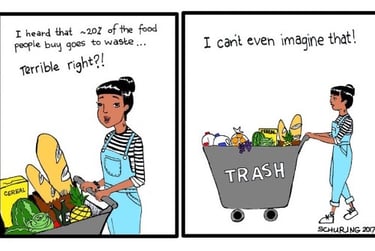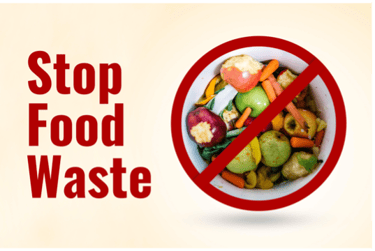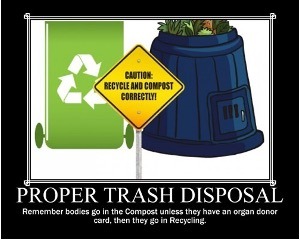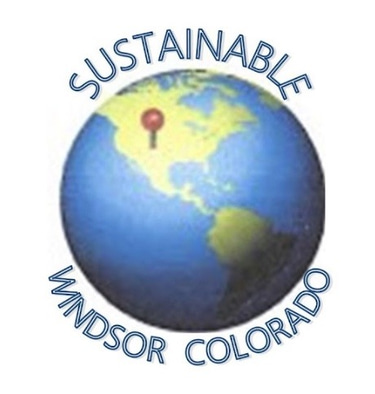Food Waste






What is food waste? It is the “carbon-rich” waste that arises anywhere food is produced, packaged, and consumed … from our homes, restaurants, universities, grocery stores ...
As we see in the graphic - if global food waste were a country, it would be the third-largest emitter (https://www.nrdc.org/stories/food-waste-101#effects ) of greenhouse gas in the world, following only China and the United States.
Food waste is a tragedy in so many ways …
… first, the dumping of food in western countries when millions are starving or malnourished worldwide
… second, the wasting of the “invested carbon” in the production and transport of food that ends up in a landfill (or hopefully composted)
… and finally, the methane emissions arising from landfills due to this organic waste.
We, as consumers, need to address waste in general.
In short … we must start to reduce our waste in ALL areas – this is especially important with food waste.
Look at the preparation of food – we need to cook the “right amount” ...
food waste begins when we make more food than we can consume.
... there is an answer – make less.
And if you do make too much … learn to love your leftovers. Eat it again …. Freeze it … Worst case – feed it to the animals (given it is ok for them to eat it …)
Now – dinner is done .... but what to do with the remaining food … so hopefully there is not much leftover food (if there is – you need to adjust the amount of food you prepare ;-)).
First rules of post-meal cleaning – no food into the trash … and no food into the water.
When food waste goes into the landfill - it is broken down by anaerobic fermentation which releases the methane emissions – one of the chief greenhouse gases expelled from landfills.
Food waste represents 55% of methane emissions in landfills and creates the same emissions as 50 million passenger vehicles.
Some statistics ...
· About a billion metric tons of food is wasted globally every year
· Food loss and waste accounts for about 7% of global greenhouse gas emissions and nearly 30% of the world’s agricultural land is currently occupied to produce food that is ultimately never consumed
· Nearly half of food produced in the U.S. (https://www.ncsl.org/agriculture-and-rural-development/fighting-foodwaste) is wasted each year
· U.S. annual food loss and waste is the equivalent of the annual CO2 emissions of 42 coal power plants
· Food waste in landfills which are the third-largest source of human-related methane emissions in the United States (EPA)
AND we continue to see an increase in per capita food waste every year – and this is one of the areas each of us can begin to attack today!!
Let’s start with a discussion of buying food …
FIRST buy “good foods” that are nutritious and good for your health!
Do you realize that over 70% of the US food supply is ultraprocessed -https://www.cnn.com/2025/02/26/health/ultraprocessed-hyperpalatable-foods-wellness/index.html -- these products are not healthy and unfortunately, they make up much of our diet because they are so inexpensive compared to good food. And they also tend to be the majority of the food waste. Sadder yet – it is the key food category for lower income families.
But that is just the first “buying” issue – people also need to look closely at packaging – we will come back to this in our discussion on plastics but your decision to stay away from non-sustainable packaging is another area for you to review.
Some approaches to consider when you shop …
· Buy locally grown and produced food, when possible
· When you buy foods - choose foods with a lower carbon footprint
· Move towards vegan/plant rich diets, including healthy plant proteins
· Avoid/reduce environmentally demanding foods (emissions, water, deforestation)
· Avoid buying bigger packages unless you are buying for large family
· Plan your shopping with a check list and avoid impulse buying
... so what to do with the organic waste
... time to start COMPOSTING!!






Composting
You need to understand what can and cannot be composted. And this may differ if you use a compost service (like Common Good). Items that will contaminate the compost process:
· Cooking Grease – Any deep frying or cooking oils (salads/veggies with oil are fine)
· Motor Oil
· Paper products – napkins, paper towels, tissues, paper bags, shredded paper, etc. (even if it says compostable!)
· Packaging, utensils, plates, bowls, to-go containers, etc. (even if it says compostable!)
· Coffee pods for coffee machines (even if it says it’s compostable!)
· Lawn/yard clippings/landscaping waste
· Vacuum or dryer lint
Bottom line –
check with your compost hauler ;-)
Composting is one of the best things we can do to prevent food waste pollution – and you can either do it yourself (a bit of work – but lots of great information on the internet on how-to) or you can hire someone.
The benefits of composting are clear … composting stores carbon which can then be used to increase soil nutrients and water retention which (in turn) reduces needs for irrigation and fertilizers.
For every 1000 tons of organic waste diverted from landfills, we save the equivalent of an Olympic sized pool of landfill space.
Food Bans:
We have seen states pass bans on the improper disposal of food waste by the food industry – we will likely never see any mandatory food waste bans at the residential consumer level. However - we can prohibit the disposal of food waste into landfills by requiring waste generators to seek more sustainable alternatives. States can also opt for food waste targets, which set objectives to reduce food waste by a certain percentage over a specified period of time, relative to a base year.
Colorado Actions:
In October 2024, the Colorado Air Quality Control Commission adopted changes to the state’s greenhouse gas reporting requirements that apply to municipal solid waste landfills. The proposed methane reduction rule requirements would apply to municipal solid waste landfills based on the amount of waste currently in a landfill (“waste in place”).
Senator Cathy Kipp’s bill (HB25-1166) on Food Waste is being discussed at the State Legislature. The bill will require the state to provide annual training that includes food waste prevention and reduction strategies and approaches for retail food establishments to donate or resell safe food. You can find information on the bill at https://leg.colorado.gov/bills/hb25-1166.
Even if it does not pass – it is still a great sign that our legislators are listening to us in terms of addressing food waste.
Policy Work Around Food Waste






What we can do
But – much of the responsibility for food waste comes down to YOU
… and what should YOU do to reduce food waste …
Not all foods are created equal in terms of environmental impact as per the above graph from Project Drawdown. For example, beef is responsible for 60 kg carbon dioxide per kilogram of food product produced, whereas eggs are responsible for only 4.5 kg carbon dioxide per kilogram of food product. As you can see in the below graph – meat products have a huge impact on greenhouse gases when they end up in the landfills.
So – let’s wrap up this section with the FIVE things you can do to combat food waste …
Top 5 Ways to Fight Food Waste
(1) Reduce the amount of food you buy, prepare, and serve to avoid throwing it away
(2)Focus on lower carbon footprint foods e.g., vegetables not meat
(3) Learn to love leftovers
(4) Do not over consume
(5) And if you have food left – time to compost
AND MOST IMPORTANTLY ...
DO NOT THROW FOOD INTO YOUR TRASH OR RECYCLE BINS
